The Trash Just Outside the Frame
This is an overview of how plastic waste is poorly disposed of in less developed countries, how we’re all responsible, how we can all do a bit to improve things. (Spoiler: Let’s not use so much.)
Watch the video below. If your heart doesn’t break when you watch that video of rubbish being dumped into the Amazon River, then you don’t need to read on.
But if you think anything like the following:
- How could people just dump trash into a river?
- Where is that rubbish going now?
- Why did they throw it away?
- Would people have used those products if they knew the containers would be disposed of like this?
- Does stuff that we throw out (or recycle) ever end up like this?
- Wouldn’t even burning rubbish be better?
Then read on, and let’s think about what we can do.

In most parts of the world, people use plastic conscientiously. People know that when you get a container and throw it away, it has to be collected by someone and then processed.
Of course, being very conscious of this is a luxury. Even being able to used bottled products is a luxury in itself.
Still, many people feel guilty about single-serve bottles of drink, and we try to not overuse it, and to recycle as much as possible.
But as we’ve travelled to less developed countries in Asia, Africa, and the Middle East, we’ve realised that the global plastics recycling problem is massive. Much bigger than us and our distaste for sorting trash.

Often, as we’re taking photo of a nice scene, we see trash in the frame. Sometimes it’s just a few bottles or scraps of plastic, but often there’s a large pile of it. We at times frame the photo so the trash isn’t in it, or know we’ll retouch the photo later.
But we felt guilty about this from the beginning. Over time, we began to adjust our attitude — just one of the ways in which living long-term in places started to affect us.
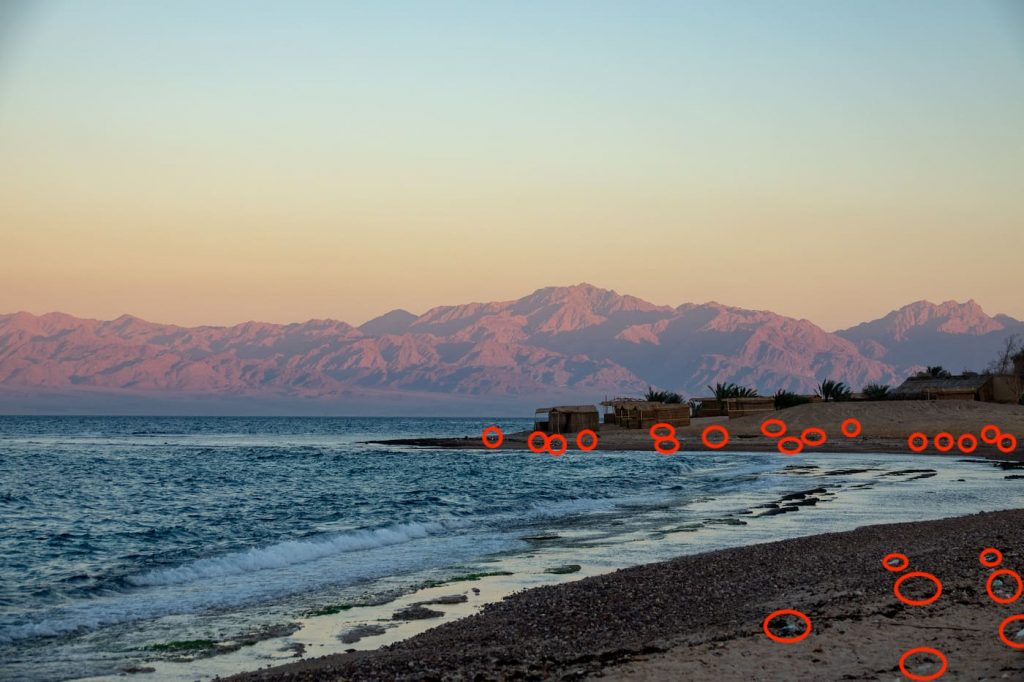
Sometimes (not often enough) we pick up the trash, and sometimes more than just that trash. But more broadly, we’ve decided we have to use the modest influence of this website to draw attention to the issue, to show how we’re all responsible as a society (despite what we do, and our best intentions), and give some ideas on what we can do to fix it.
Contents
Too much trash, even at home in the US and Australia
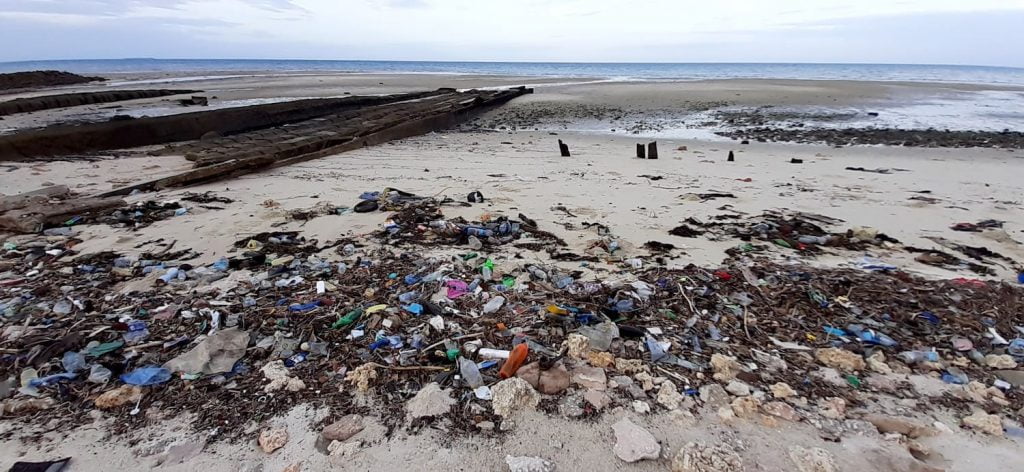
Even starting at home, in Australia and the US, we realised recently that all wasn’t sunshine with recycling.
Firstly, we consume way more plastic than we need to. Every time we crack open a fresh bottle of anything, it becomes waste that someone needs to hand-sort (the way most recycling is sorted in Australia and most parts of the world) and then that a machine needs to process before it’s re-used.
Even if we’re conscientious, we may not always be. We slip up and may dispose of something incorrectly. But more broadly, only about 30% of recyclable trash is actually recycled in America, per the EPA, for example.
Even if we’re personally putting 100% of recyclable trash in the right bins, we still think we’re responsible for the broader rate of 30%, simply because by consuming plastic we’re contributing to the economy for it.
By the way, this rate is much worse elsewhere. For example in Africa, only 4% of trash is recycled. And again, as users of plastics, we’re complicit.
Secondly, recycling is not 100% effective. Depending on the region of the world, recycling recovery rates go between 25% and 80%, but it’s usually less than 50%.
For example, America’s recycling recovery rate is 35% per the EPA. Even in Germany, the recycling champion of the world, less than half of plastic that’s put in the recycling bins is actually recycled. (Don’t be angry at Germany, they’re still better than you at engineering, punctuality, and jokes about German punctuality.)
So a large proportion of what we conscientiously dispose of just becomes trash.
Finally, we have limited control over how our waste is recycled. Many countries (including Australia and the US) ship a lot of their waste to less developed countries to “recycle”.
This used to be China, where half of the world’s plastic was shipped since the 1990s until they declared “no” recently, changing the course of the recycling industry forever.

Even with good intentions when you dump the bottle in the recycling bin, a lot can go wrong along the global recycling supply chain. Assume your bottle even makes it into a ship. Now, it carries with it the carbon burden of the fuel burned to get to its destination.
After the trash arrives in a foreign country, it has to still be taken to a facility, where they’ll decide what to do with it — and they may recycle it, but might also just dump it or burn it.
Malaysia, the biggest recipient of recyclable American plastic since China stopped accepting them, mismanages more than half of its own recyclables. Indonesia and Thailand are big recipients and they mismanage more than 80% of their plastics.

Electronic waste (“e-waste”) is the biggest concern, as it has been for a long time. Firstly, it contains a lot of metal, and the easiest way to get at it is to burn the plastics.
But secondly, the plastic in electronics is even more polluting than food-grade plastics. So burning them happens more often, and is worse for us. Even though China cracked down on “black factories” a decade ago, they’re still prolific in many places.
Then there’s the way the rest of the world deals with trash.
The Trash problem of the Less Developed World
In most of Africa, the Middle East and Latin America, you don’t see colourful recycling bins as often as you do in western countries.
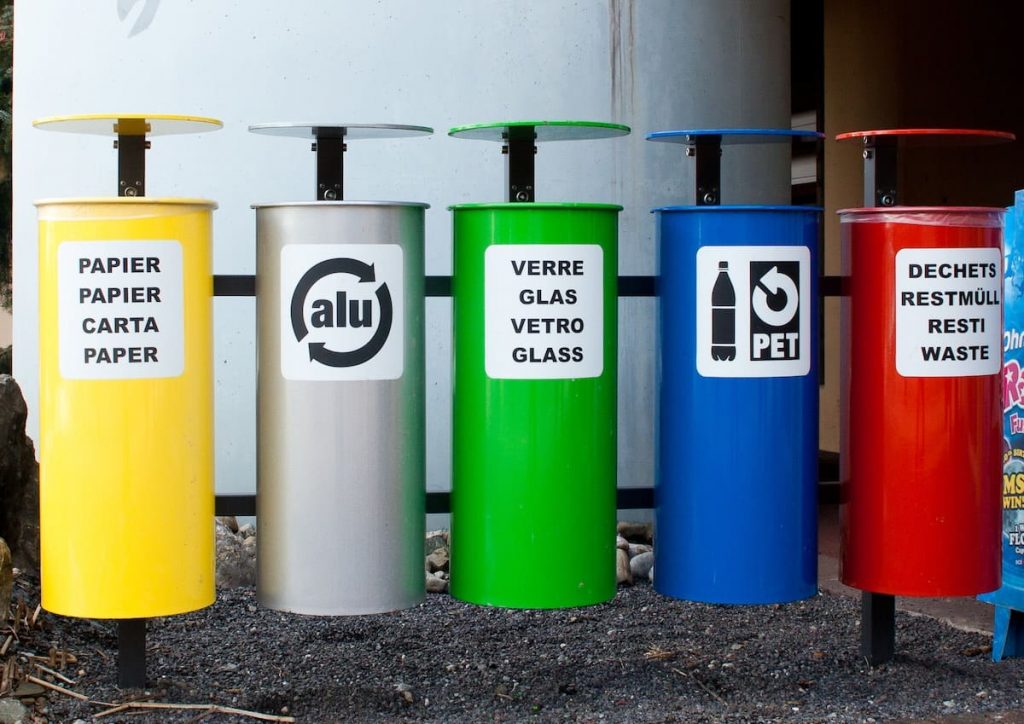
The infrastructure for kerbside waste collection (let alone recycling) just isn’t available in most of the world. In major cities like Dar es Salaam, only 40% of the trash makes it to municipal processing facilities, the remainder mostly being dumped by the road in informal (illegal) sites.
At the same time, plastic use is going up globally. The World Economic Forum thinks that globally we’ll produce double the annual amount of plastic within 20 years.
Most of this increase in trash production comes from the less-developed world, where we’ve seen trash production triple over the last fifteen years.
There are lots of reasons why less-developed countries are producing more trash, but you can sum it up with a) more people being born, b) more people getting wealthier and being able to afford stuff that comes packed in plastic, c) social attitudes to packaging (“it’s cleaner” — Africa/Middle East; “it’s fancier, too” — Asia), and d) companies fulfilling (and stoking) demand.
That’s not to say less-developed countries don’t recycle or have forward-thinking policies. Many regions/countries (like Kenya, Zanzibar, Ethiopia, and even parts of Egypt) have banned using single-use plastic bags, and sometimes bottles (like in beaches and national parks in Kenya).
You can get fined heavily if you’re caught with a bag or bottle in many places in Africa! This is further ahead of policies in most developed countries where people are charged for a re-usable plastic bag (that is un-recyclable and will inevitably end up in the trash anyway).
But despite some forward-thinking policies, plastic gets used in less-developed countries. And what makes it worse is that not only are recycling systems lacking in many countries — trash disposal systems themselves are lacking. So people buy goods and then have to deal with the waste themselves.
In some countries, there are cottage industries of waste management. I wrote previously about the Zabbaleen, or “Garbage People” in Cairo, generations of migrant workers and their families who live in trash, sort it, and profit from processing and resale, despite the Egyptian Government’s attempt to quash them.
Small industries like this exist everywhere. Everywhere where there’s a dump there are people who benefit from recovering waste and re-selling it. The profit comes in various ways.
Sometimes items are recovered and repaired. Sometimes, sorted materials are on-sold to bulk recyclers.
And sometimes empty bottles are sold to counterfeit product makers, who’ll put a cheap shampoo or perfume into the container of an expensive one. (Yep, that’s one way in which fakes are made!)

Most countries do have waste disposal programs organised by the government. But these are only available in official cities. In Kenya, the majority of people live outside cities and so lack municipal services.
Even in the capital of Nairobi, large developments of slums are also unsupported. So waste disposal programs aren’t even available to many people who need them.
But even for people who do have access to waste management, they’ll only use the service if they can afford it (or choose to pay for it). Waste disposal is not a free service in many countries, including Egypt or Kenya. People see the fees, consider their options and think… that’s too much. What else can I do?
The way most of the less-developed world deals with trash is to burn it.
The Scourge of Trash Fires

Burning trash like plastics might seem like a good idea on the surface. You throw it in the fire and it’s gone. You can see the appeal when other ways of dealing trash are unavailable or expensive.
But obviously, burning trash is a huge dumpster-fire of a problem. Trash burning is illegal in most parts of the world but is poorly controlled.
Even in large, developed cities like Nairobi, Nairobians dispose of only around half their trash at dumpsites. While it’s pretty uncommon for people to have trash fires at home in the big city, the “informal” street-side dumpsites are often trash fires. So it happens down the line, anyway.
When burned, plastic releases toxic chemical fumes (like dioxins, furans and styrene gas) into the air that are bad for you (they’re carcinogenic) and the environment. They’re not just bad for the air or for when you breathe.
The broader problem is that chemicals from plastic fumes settle down into the soil and then pollute them, disturbing crops and waterways.
But surely there are good ways of burning trash?
Trash Incinerators: “Waste-to-energy”?
There are actually good ways of burning trash: in large-scale trash incinerators, often called waste-to-energy plants. “Waste to energy.” Doesn’t that sound great??
Waste-to-energy plants torch garbage at very high temperatures, creating steam that is then used to generate electricity and sometimes also heat buildings.
Burning trash for electricity varies in efficiency between 14-28%, though most European plants are around the 25% mark. A coal plant, by comparison, has an efficiency of 37%.
Waste-to-energy plants are popular in Europe, where they don’t have nearly much open space to fill with landfills. Europe already burns 42% of its waste! The US burns 12.5%, by comparison.
China already has some 300 waste-to-energy plants operating, with another several hundred in the pipeline.
In Africa, Ethiopia opened Africa’s first waste-to-energy plant in Addis Ababa in 2017, with one opened shortly after in Cape Town, South Africa. Other plants will come, but they’re capital-intensive to produce and operate.
People in favour of burning waste for energy, known as “burners”, argue that waste-to-energy plants facilities are a great idea because, for one, they reduce the staggering volumes of garbage we create by around 75%.
Secondarily, burning trash prevents methane from being produced. When we dump trash into landfill, it results in methane, which is very greenhouse-intensive (four times more than carbon dioxide). (Although that methane from landfills can be collected as biogas and burned for power, too.)
Finally, you can create energy by burning trash — particularly plastic. It’s not a great source of energy, but it’s not a virgin fossil fuel like oil.
But it’s not all rosy. People against trash incineration, “anti-burners”, have some strong points against it.
Anti-burners think that firstly, incinerators spew the same noxious chemicals we discussed above — dioxins, furans, heavy metals, et al. The high-temperature fires used in incinerators emit more carbon than a coal plant. There’s some truth in this, but a well-running incinerator plant can be tuned with high-tech filters to keep emissions well under EPA standards.
Burning trash still results in ash (even if that’s 1/8 of the weight of the original materials) known as “fly ash”, which is even more highly concentrated in toxins than the original products. And this has to be disposed of, too. It usually becomes landfill, though some other people are working out how to extract metals and porcelain out of it.
Anti-burners also have a general umbrella argument that burning trash distracts us from real solutions of reducing plastic use and recycling. The existence of waste-to-energy plants has some perverse side effects.
Sometimes, European cities have to divert recyclable trash to waste-to-energy plants to make sure they have the minimum supply to keep them profitable.
Meanwhile, innovative ideas like trash-burning cookstoves (that use the heat from burning trash directly to cook food) are inspiring. Hopefully more like that will come.
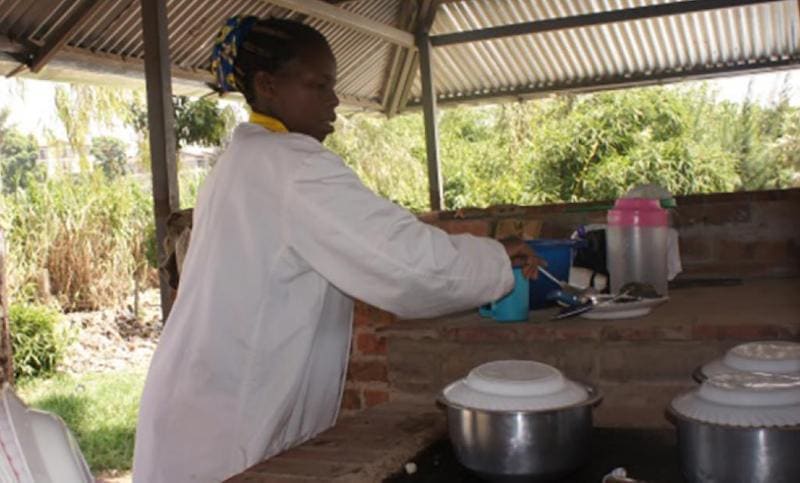
Possible Crazy Solution: Using less plastic
Making a conscious choice to use less plastic is a good one, although it’s hard to implement in practice completely.
In developed economies, it’s still kind of “edgy” to not use plastic, especially for those among us who try to reduce plastic waste to zero.
An easy first start is to stop drinking bottled water. You can drink tap water out of a glass and it contains 100% of the same hydration impact. Think it’s gross? Get a filter (or harden up).
We’ve drunk tap water all around the world, boiling it in places like Egypt, East Africa, and on Asian islands. To date, we’re alive, and haven’t been sick from it. It’s just our experience and everyone’s varies, and we wouldn’t do it everywhere (e.g. India), but it’s a good start.
Contrary to popular belief, you don’t need to have a bottle made of aluminium, steel, BPA-free plastic, hemp, or a plastic one you previously bought and are keeping out of guilt despite the fact that it looks kind of grungy. Unless you think that adds to your cred.
Many people I know keep plastic containers after receiving them and re-use them at home. But when you go one step further and take the containers back to be used again, saying “I have a reusable container”, you’ll be warmly received.
You have to think ahead these days to bring your re-usable bags, so it’s not as much mental burden to add containers to the mix. And some companies like retub in Australia are making the whole experience more stylish to boot.
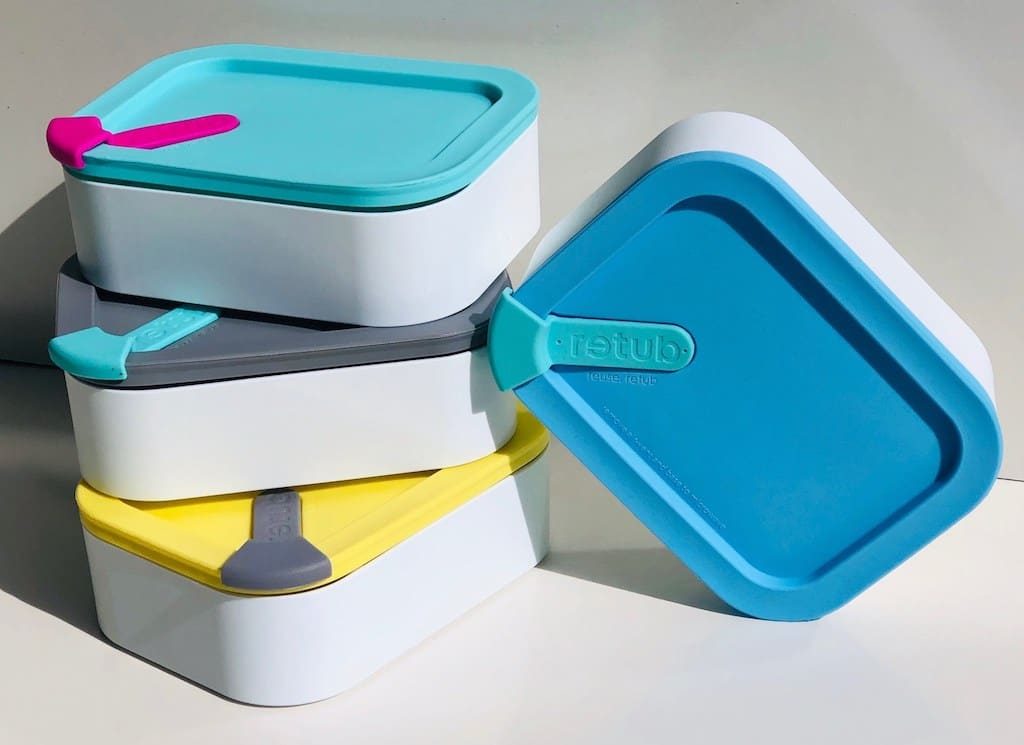
I understand the difficulty of using reusable containers in daily life. Life is so hectic already. People sometimes feel embarrassed about doing something outside the norm.
But you’d be surprised how little effort it takes to use a reusable, and how you can do it without seeming preachy, or talking about it, or indeed anyone saying anything. “I have a container, can I please use this?” and watch as people smile and help you. (They might even give you a bigger serving for your bigger container. Bam! You win.)
If you’re the kind who shops at farmer’s markets, it’s even possible to get things like shampoo, toothpaste, and all your foods in plastic-free containers. But unfortunately, this is still very hard in supermarkets.
Secondly, every time you buy anything with plastic, think about whether you really need it, considering part or all of it will become landfill or pollutants.
Just visualising large trash pits in Asia and Africa is enough to put us off quite often. “I don’t want this toy to be floating on the ocean, so I won’t buy it.”
Admittedly, in less-developed countries it’s still harder to go plastic-free.
On the one hand, a lot more shopping is done at informal places like road-side food stands. They’re less likely to give you plastic bags easily because it costs them money, and they’ll welcome it if you take your own.
Many products come in repurposed containers. In Tanzania, honey comes in re-used liquor bottles. Fresh milk comes in re-used water bottles, usually donated by tourists.
But it’s difficult to eliminate plastic for non-food items. There are three things that make it harder: a) fewer places to shop, b) less product choice, and c) a market tendency to believe that things in plastic containers are cleaner, less likely to be contaminated, and higher quality. (All of which I agree with, by the way.)
Aside from avoiding buying things and preferring re-usable containers where we can, we’re still looking for ideas on how to reduce plastic waste in our wandering lives. If you have any ideas, comment below or write to us.






